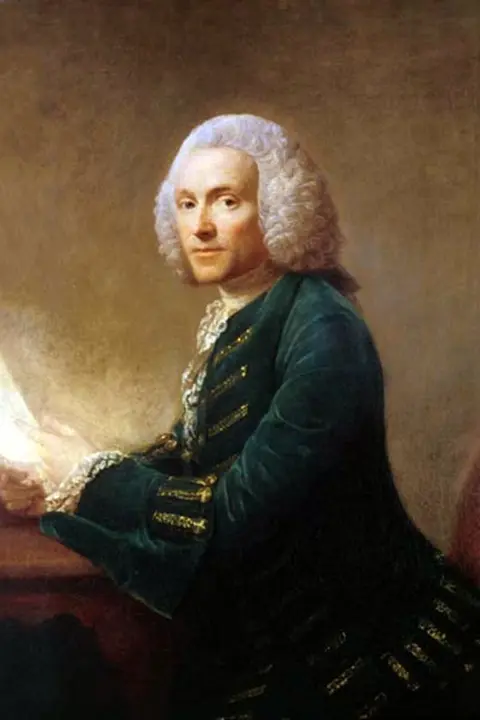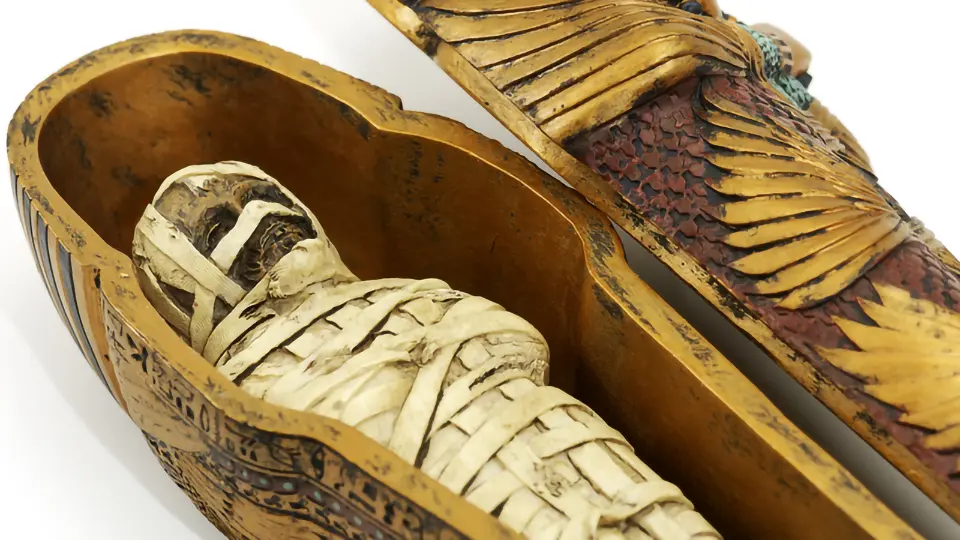Modern Embalming entails treating a departed body to protect it from decaying. But what is embalming in the most basic sense? This means removing bodily fluids and replacing them with a formaldehyde based liquid.
The earliest Greeks who commanded the endurance of their warriors in dying as in real life anticipated the heroes’ dead bodies to stay without artificial interference during the mourning days that led up to the last rites.
Other communities, less pressuring of their heroes, created a vast range of preservatives & ways to rule out decay or reduce its effects. But what is embalming when talking about ancient Egypt? Mummification was employed by the pharaohs to preserve the body with the intention that the soul would need no other dwelling place after being raised on Resurrection Day.
Key takeaways
- Embalming is a process to preserve the deceased.
- Embalming dates back thousands of years to Egyptian times.
- Embalming is commonly used to preserve the appearance of the deceased by many funeral directors.
Table of contents
The Egyptians also believed that the mummy’s presence would help keep evil spirits away from their homes. Some cultures embalm the body immediately following death, while others leave it alone.
Bodies have been preserved in powerful spirits, vinegar & wine. For instance, the corpse of Lord Nelson (the British admiral) was taken back to England from Trafalgar in a brandy cask. Even the Greeks occasionally opted for concessions. For example, Alexander the Great’s body was taken back to Macedonia to Babylon in a honey container.
Perfumed unguents and spices application to reduce decay was highly practised that English embalming word had its first definition “putting on balm.” Typically, however, this term describes a less casual process, introducing agents into the departed body to preserve it.
What is embalming history?
“What is embalming”? The history and techniques go back many years and are linked mainly with ancient Egypt, whereby, as in the South America and Asia parts, climate and dry soil encouraged embalming development.
According to Egyptian text, mummification was known to Egyptians approximately 4500 years ago. The oldest tomb paintings depict a king seated at his grave mound under an awning that shields him against the sun’s rays as if he were still alive. Such tombs were used throughout Egypt for at least 2,000 years. Unfortunately most of these tombs have not survived.
Most ancient Egyptian remains have been found in the deserts along the Nile River Valley. There were several different types of mummies: some were wrapped in linen bandages, others were sealed inside wooden coffins covered with gold foil. The most common method of preserving corpses was drying them in the desert sun. This technique would be continued throughout many centuries. By Ramses II’s time, about 1200 BCE, embalming took another form. After removing the brain and internal organs, the remaining soft tissues of the body were stuffed with resins, then dried again in the sun, and finally wrapped with linen strips and papyruses. Later, the body was coated with bitumen paste and laid to rest in the chamber tomb.
As far as the religious beliefs of the Egyptians regarding mummification and what is embalming, we know little. The ancient Egyptians buried their dead near cities where they could be visited by relatives, so it is likely that they also held funerary rituals.
Mummification techniques developed differently depending upon place and period. Many bodies were simply left exposed to decompose in the Ptolemaic period (312-30 BCE). They were sometimes mummified after being drained of blood – which occurred by having a small hole drilled into the heart. Others were buried without any kind of preservation treatment.
The process became more elaborate during the Middle Kingdom (1700-1200 BCE). The head was separated from the body and placed in canopic jars during this period. Various organs were removed and replaced with magical charms.
This process involved cleaning the body, draining the blood and replacing the fluids with preservatives. A covering made of leather, linen and gum resin was applied over the body.
Some mummies even wear jewellery and accessories. The corpse was treated with herbs, oils and ointments at this point. During this period, many kings’ tombs were decorated with scenes showing daily activities of the king’s life to help guide the soul after death.
Next, the mummy was packed tightly with straw and clay to balance the weight, preventing movement when placed in the coffin. Around the chest was a cloth stuffed with aromatic herbs (that were wrapped around the neck), which helped mask the smell. The body was then washed, perfumed, and painted. Many mummies were found in this dress stage, with the bones protruding through the skin, clearly suggesting these individuals were not already mummified properly before burial.
It was usual to bury the corpse with offerings and prayers at this point. They were commonly buried within a pyramid, but some people chose to be entombed outside in cenotaphs.
Cremation was practised during specific periods of Egyptian history: most often among the elite or royalty. An example of a cremated individual has been discovered in Saqqara, Egypt, dating from the first intermediate period (2190-2070 BCE.). It consisted of an adult male who was probably of high status. His remains were recovered from a pit containing various objects, including a wooden box containing his skull and jawbones, along with a pair of sandals, rings, earrings, pottery fragments and a bracelet.
Modern embalming development
For a light hearted look on embalming this comprehensive video explains the process and answers most people’s questions.
If the video does not play on this device please play on another.
For most people the question “what is embalming” means the modern arterial injection embalming process as a mortuary procedure is argued to have started in the eighteenth century in England. Actually, William Harvey (a noted English physiologist) had developed this technique in the headmost half of the seventeenth century. William developed this technique in experiments that led to his recorded finding of blood circulation after injecting coloured solutions into the deceased arteries.

Later Grabriel Clauderus & Frederik Ruysch (German/Dutch scientists) applied the same arterial-injection methods to prevent cadaver decomposition. However, William Hunter (Scottish anatomist) (1718 to 1783) is the earliest individual to give complete information about the cavity/arterial embalming process as a reliable technique to preserve a body.
William Hunter’s finding attracted more attention when John Hunter (his junior brother) embalmed Mrs Mary Van Butchell’s body in 1775. This embalmed body was put on display in a glass topped coffin.
The first recorded use of arterial injection in America may have occurred in 1812 in New York City. By 1850, the arterial system was used throughout the United States for many corpses. This technique allowed the embalmers to insert tubes directly into arteries and veins to remove blood.
In the 19th century, embalming spread rapidly throughout the world, particularly in the U.K. and U.S. A study conducted by Dr William L. Bowers showed that nearly 90 per cent of U.S. public school students believe it is acceptable to embalm a person without permission from the family. Studies show that less than 10% of Americans know what happens to human remains after death.
In the 21st century, technology continues to advance — today’s embalmers can extract fluid from virtually every organ and tissue, preserving even microscopic specimens.
Common modern embalming procedures
In today’s embalming procedure, the entire process can take between one and three days.
Today’s technique enables an embalmer to perform two types of embalming processes on the corpse: one involving arteries (artery embalming) and the other using all cavities (cavity embalming).
With arterial embalming, the corpse is cleaned up and debrided, then the circulatory system is flushed with a preservation fluid through the carotid artery in the neck. the entire process can take between one and three days. Chemicals such as formaldehyde, glutaraldehyde, methanol, are contained in embalming fluid.
A tool called a trocar is then used to create channels in the internal organs, a suction is used in conjunction with this tool. This removes other blood etc. The channels are then injected with embalming fluid to preserve the internal organs.
Cavity embalming is often used in conjunction with arterial embalming because the latter does not thoroughly remove all the non vital fluids from the body.
Reasons not to embalm
Apart from saving money if embalming is not essential, religious beliefs such as in the Jewish and Islamic faiths do not allow embalming. Green, natural burials such as woodland locations do not allow embalmed bodies due to the chemicals used, which would then seep into the ground.
Conclusion
When the question is asked, “what is embalming”? it can be seen that methods have evolved significantly since the early days of the practice. Today’s techniques enable the undertaker or an embalmer to maintain the body’s integrity while preparing it for viewing. While both arterial embalming and cavity embalming may involve multiple steps, they are sometimes performed differently depending on the individual circumstances involved in the case.




